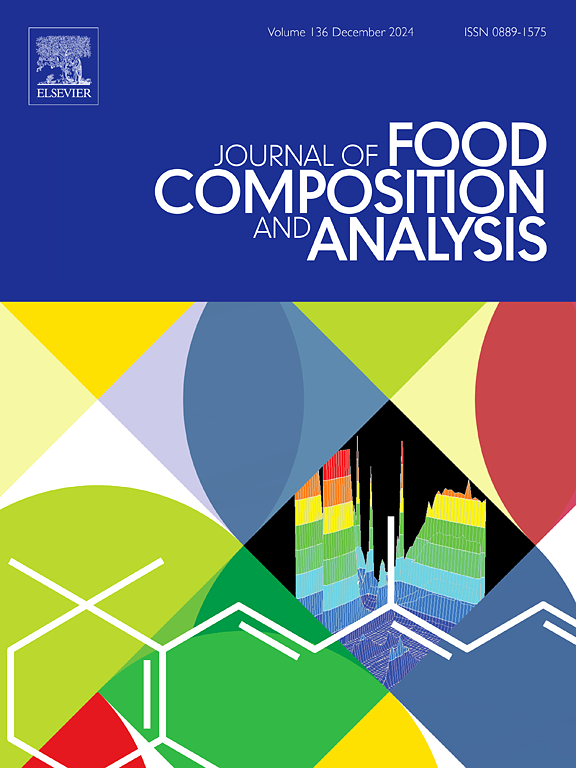Determination of microelements profile in fruits from the Solomon Islands
IF 4
2区 农林科学
Q2 CHEMISTRY, APPLIED
引用次数: 0
Abstract
The present study has evaluated the profile of the microelements as an indicator of fruit quality and sources for minerals. The microelements contents were determined in the tropical fruits from the Solomon Islands, using atomic absorption spectrophotometer. The highest contents of Cu (1.38 ± 0.19 mg/100 g), Zn (2.17 ± 0.12 mg/100 g), Fe (2.86 ± 0.12 mg/100 g) and Co (0.0046 ± 0.0001 mg/100 g) were in cutnut while kondali and golden apple had the highest contents of Mn (2.08 ± 0.04 mg/100 g) and Ni (0.048 ± 0.002 mg/100 g), respectively. Fe was dominant while Co contents were the least in most fruits. The fruits covering of the recommended daily allowance (RDA) and adequate intake (AI) showed Cu as the highest RDA contributor followed by Mn, Co, Zn, Fe and Ni. The studied fruits have demonstrated the highest covering of RDA/AI for children, followed by adolescents and adults. Most fruits had microelements below RDA/AI amounts but classified as ‘sources’ above 15 % RDA and ‘rich sources’ above 30 % RDA which revealed most fruits in 100 g portion as sources or rich sources of microelements for children but not for adolescents and adults due to their higher dietary requirements.
求助全文
约1分钟内获得全文
求助全文
来源期刊

Journal of Food Composition and Analysis
工程技术-食品科技
CiteScore
6.20
自引率
11.60%
发文量
601
审稿时长
53 days
期刊介绍:
The Journal of Food Composition and Analysis publishes manuscripts on scientific aspects of data on the chemical composition of human foods, with particular emphasis on actual data on composition of foods; analytical methods; studies on the manipulation, storage, distribution and use of food composition data; and studies on the statistics, use and distribution of such data and data systems. The Journal''s basis is nutrient composition, with increasing emphasis on bioactive non-nutrient and anti-nutrient components. Papers must provide sufficient description of the food samples, analytical methods, quality control procedures and statistical treatments of the data to permit the end users of the food composition data to evaluate the appropriateness of such data in their projects.
The Journal does not publish papers on: microbiological compounds; sensory quality; aromatics/volatiles in food and wine; essential oils; organoleptic characteristics of food; physical properties; or clinical papers and pharmacology-related papers.
 求助内容:
求助内容: 应助结果提醒方式:
应助结果提醒方式:


